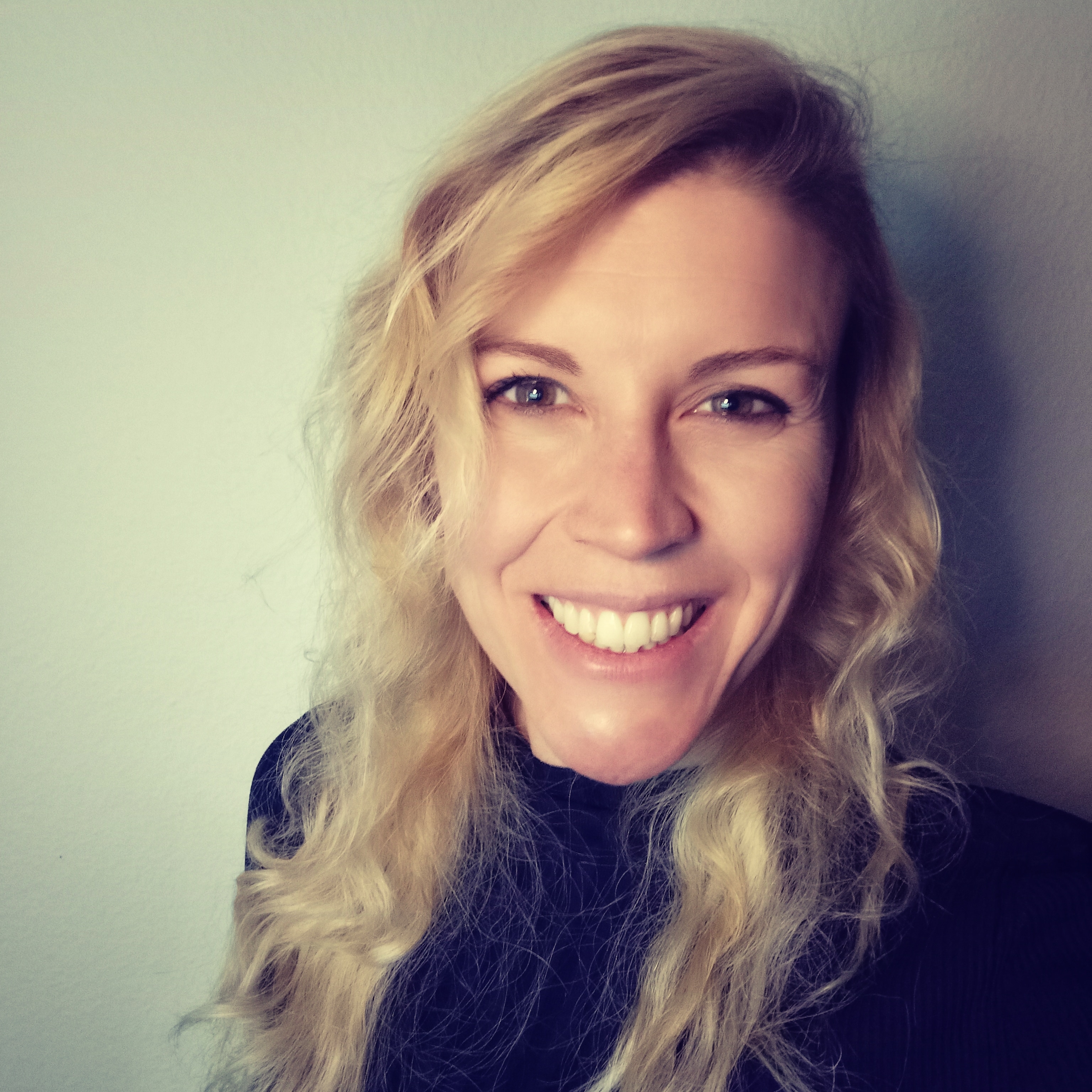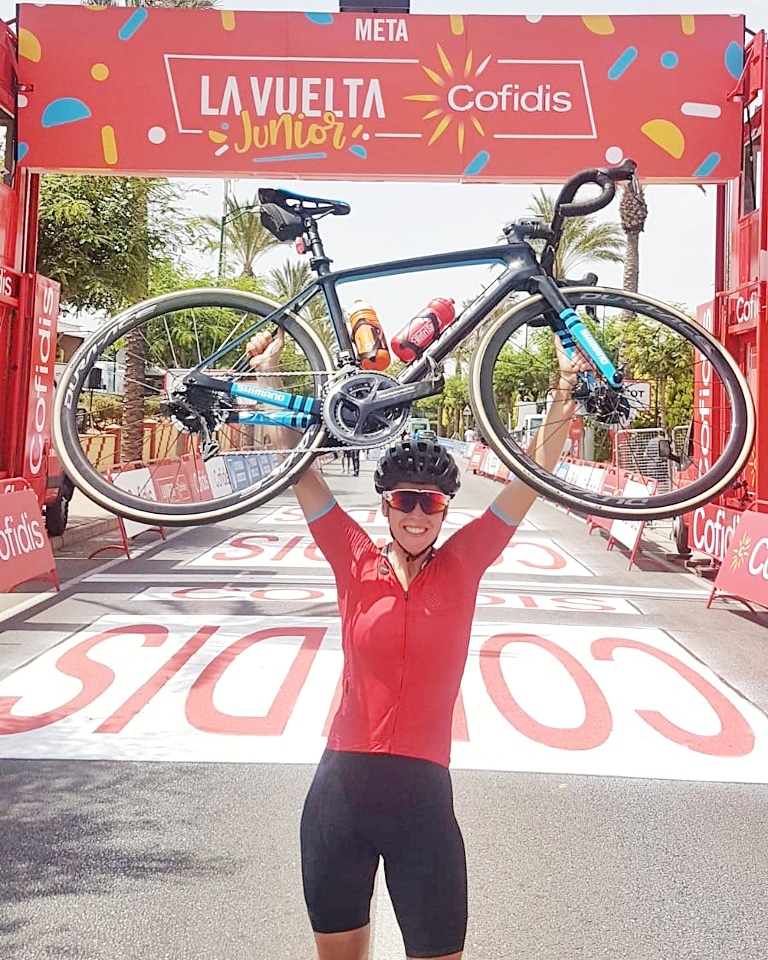Danube Cycle Plans - INTERVIEW WITH MONIKA SATTLER
02-12-2021
With Monika Sattler, diversity consultant and cycling ambassador, we have talked about her love for cycling, how she uses cycling to motivate people to follow their dreams, her experience with cycling infrastructure around the world and much more.
Two Danube Transnational Programme projects, the SABRINA and Danube Cycle Plans project (a few words about both projects are below), dealing with cycling have joined forces and prepared a series of interviews with people working in the mobility and transport field, with the focus on cycling. We have asked them about their opinion on different topics connected to more cycling, safer cycling infrastructure, promotion of cycling, etc. Visit the webpages of both projects to read the interviews which will be joined also in the capitalization newsletter published in December 2021 (subscribe HERE).
_____________________________________________________________________________________________________________________________
 Monika Sattler is a diversity consultant, cycling record holder, TEDx speaker and author. She helps leaders, teams and organizations to enhance diversity in terms of recruitment, sales, communications and corporate culture.
Monika Sattler is a diversity consultant, cycling record holder, TEDx speaker and author. She helps leaders, teams and organizations to enhance diversity in terms of recruitment, sales, communications and corporate culture.
She has worked with the "Women Back to Business" program at the University of St Gallen, WeAdvance, Women in Mining and the Women's network of Caterpillar. She gives workshops around the world and has spoken at TEDx, Rotary Club, Morgan Stanley, Vistage, Women Coaches Symposium, Eurobike and more.
Originally from Germany, Monika has lived in the USA, Australia, Spain and now Switzerland. A graduate of the University of Minnesota and Georgetown University, she has previously worked for the World Bank, International Monetary Fund, and IBM.
______________________________________________________________________________________________________________________________
Monika, in 2018 you had a big dream to be the first female in history to cycle Spanish La Vuelta, a 3-weeks long bike race, one of the three Grand Tours of professional male cycling. 80% of people told you it was impossible. You proved them wrong, you did it: every single stage, same mileage and elevation, same days, just hours before the official race. How was this idea born and what was the main goal of completing La Vuelta?
The idea started when I had a mid-life crisis with 30. I had been working different career paths by then and had two master’s degrees in my pocket but for some reason, I just couldn't find that fulfilling job I was passionate about. At that time, I lived in Australia. I decided to move to Malaga, Spain to start a new life. I had never been to Malaga before, didn‘t speak a word of Spanish and didn‘t know anyone. My only mission was to find my purpose in life. While I was trying to find my own purpose in life, I realized that there are a lot more people than I thought that were in the same situation as I was. They were also stuck or lost but they might not have the confidence or courage to pursue their goals. To showcase what it means to overcome obstacles and to inspire others, especially women to break barriers and reach their full potential, the idea of cycling the Vuelta was born. As you mentioned, 80% of the people believed it was impossible. I wanted to show what it takes to set, pursue, and achieve seemingly impossible goals inspiring others that nothing is impossible.
In your TEDx talk from 2019, you encourage people to pursue the goals that scare them. As an example of how to do that you often use cycling and above mentioned La Vuelta. Why did you choose cycling as a tool to motivate people to follow their dreams?
I love cycling. Cycling has been my passion for 15 years. I love the challenge, the friendships I built, the places I discovered with it. Cycling has been also my best teacher of how to set, pursue and successfully achieve goals. As many people have bikes, they can relate to my story and the challenges I share through cycling. That is why I use cycling as a tool to motivate people to follow their dreams.
Cycling and bicycles have a special place in your life. Many people know you as RAD Monika. Rad (das Fahrrad) means bicycle in your native language German, besides it is the name of the method you developed. What is the method about and how do you use it?
The RAD method is an acronym and stands for Real, Adventurous and Daring and explains the three stages of how to set, pursue and achieve goals. Having taught this method through coaching, workshops and talks, I have developed this method further and it has evolved to the Thrive Pyramid. The Thrive Pyramid shows in an even easier but powerful way how to set, pursue and achieve goals by building essential skills like self-confidence, focus, passion, courage and resilience.
 In these COVID-19 times, people across the globe look to bicycling as socially distant transportation and recreation option. The emerging role of bicycles serves as a reminder of the need to improve infrastructure to prevent serious injuries and fatalities amongst cyclists. You have lived, worked and cycled in many countries around the world. You are an experienced cyclist, however, have you ever felt uncomfortable sharing roads with cars, even trucks? Have you had any bad experiences with poor/unsafe infrastructure while cycling and what was it?
In these COVID-19 times, people across the globe look to bicycling as socially distant transportation and recreation option. The emerging role of bicycles serves as a reminder of the need to improve infrastructure to prevent serious injuries and fatalities amongst cyclists. You have lived, worked and cycled in many countries around the world. You are an experienced cyclist, however, have you ever felt uncomfortable sharing roads with cars, even trucks? Have you had any bad experiences with poor/unsafe infrastructure while cycling and what was it?
I have lived in five countries so far (USA, Australia, Germany, Switzerland, Spain) and cycled in many more. Many times, I have felt uncomfortable and unsafe in sharing the road with cars. I discovered it is the tolerance and respect between each other that determines how unsafe I feel. The most unsafe I felt was in Australia. I found there was a lack of respect between road participants. Even though there is a minimum distance law when passing cyclists, every day I have had a close encounter with passing vehicles. Unfortunately, during my time there, I have seen a lot of accidents between cyclists and cars. In addition to the lack of respect, I see that the lack of infrastructure or a sudden change of the infrastructure for cyclists (e.g., cycling lane suddenly stops) causes a lot of friction between cyclists and cars.
Do you think more people would use their bicycles daily if safer cycling infrastructure would be broadly available? What would you suggest as further steps for improving the infrastructure and its safety?
Definitely! I truly believe (and experienced it myself) that if I feel safe on the road, I am more willing to ride my bike. Infrastructure plays a big factor to ensure the safety of cyclists.
Separating cyclists and car lines would be the best-case scenario. If that is not possible, clearly defined lines and warning signals would help increase safety for cyclists.
Cycling in Europe, especially in some urban areas, is lately gaining in popularity. In your opinion, what are the most effective ways to promote cycling? Who are the best ambassadors of cycling?
The most effective way to promote cycling is to show its benefits and facilitate the ease of cycling. Cycling could mean working out, meeting friends, getting from point A to B among many others. The promotion is dependent on the target audience. If we want to promote cycling as a means of transportation it means we make it safe, cycling routes easy to navigate and a competitive option with other forms of transportation. That also means the participation of workplaces offering a place to securely store the bike as well as offering shower facilities. When promoting cycling as a hobby, the option of getting out of the city quickly should be considered. Another added benefit for promotion would be offering mechanical services and tools in key places that could help to fix flat tires or easily reparable bicycle issues.
Those who truly embody the benefits of cycling are the best ambassadors: commuters, other cyclists, bike shops and companies can be great ambassadors.
Talking about the ambassadors, you are also Women in Cycling ambassador. The initiative is aiming to help women to get more visibility, impact and leading seats in the cycling industry and in the entire sector. The transport section in general, including the cycling sector, is mostly men’s world. Why do you think it is important more women start cycling and are represented in cycling sector projects and decision-making processes?
Women make up half of the population and can enjoy the same benefits about cycling as men. When women are represented in cycling sector projects and decision-making processes, women-specific needs and wants are (easier) addressed. That is why I am so passionate about my work as a diversity consultant. I help leaders, teams and organizations to enhance diversity in terms of recruitment, sales, communications and corporate culture. The more people overall are cycling and use it as a means of transportation, the fewer cars will be on the road. Thus, it is a win-win for everyone.
What is your first association to the word bicycle?
Freedom. Freedom to be independent of public transportation. In fact, this is how I started cycling. I just didn’t want to waste my time waiting for the bus in the morning. Instead, I could combine my exercise with the freedom of going to school or work without depending on someone or something else`s schedule. Freedom also because it allows me to go out and explore places that I wouldn’t do on foot because they are too far.
________________________________________________
Photo 1: Monika Sattler (personal archive)
Photo 2: Monika Sattler at La Vuelta (personal archive)
________________________________________________
A few words about both projects:
- SABRINA project focuses on road infrastructure safety for cyclists as one of the most vulnerable road users. It tackles cycling infrastructure safety issues on existing, planned, and missing cycling corridors crossing nine countries in the Danube region. The main goal is to help decision-makers plan, design, and implement safe and sustainable solutions for improved cycling infrastructure in the region. More at the project’s webpage, Twitter or Facebook.
- Danube Cycle Plans project aims to implement Pan-European Master Plan for Cycling Promotion. Project activities include the development of National Cycling Plans based on a common transnational Danube Cycling Strategy, defining a Danube cycle route network, infrastructure standards and adequate financial support and increasing the awareness of relevant stakeholders for the needs of cyclists. More at the project’s webpage.
